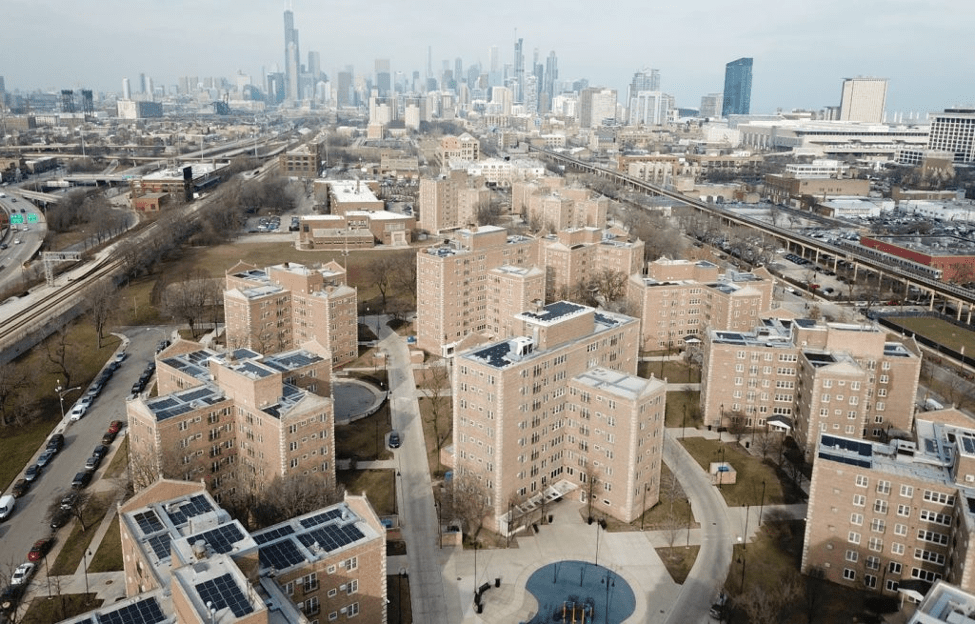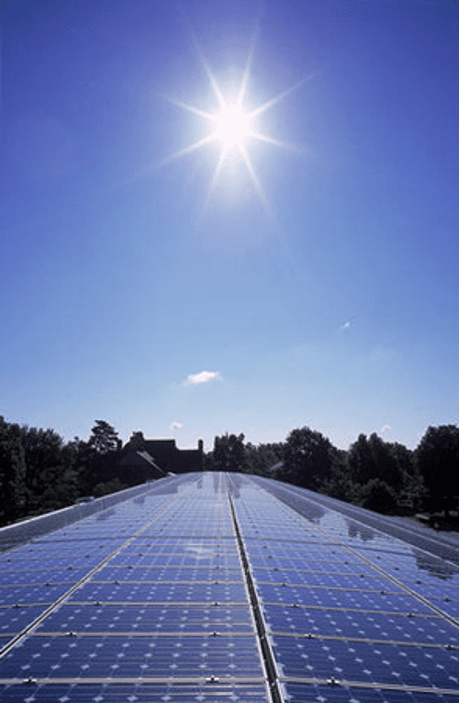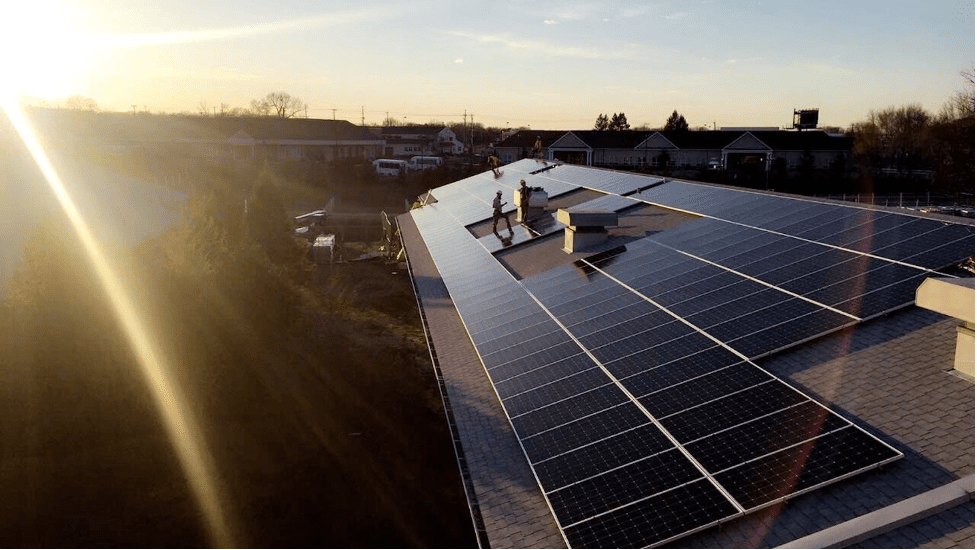DOE SETO Funding Opportunities
MSRDC continues to work on behalf of our members to build new relationships, and ultimately contracts, with new potential federal agencies. We do this by creating relationships with key representatives of federal agencies and emphasizing the value and caliber of work our member institutions possess.
Focus Area 1
Call for Submissions: Photovoltaic Hardware Performance, Reliability, and Characterization
Call for Submissions: Photovoltaic Hardware Performance, Reliability, and Characterization
Status: Under Review
Office of Energy Efficiency and Renewable Energy (EERE)
Solar Energy Technologies Office (SETO)
Maximum Funding Per Project: $400,000 (spread over 2 years)
Objective: The objective is to improve the functions of photovoltaic (PV) hardware over the long term, maximizing energy yields, increasing efficiency, lowering the manufacturing cost of PV technologies, and improving PV system modeling to ensure reliable performance prediction to enable a carbon-free electric grid by the year 2035.
Background: The cost of solar PV has decreased more than 80% since 2010, driven by global economies of scale, technology innovation, and greater confidence in PV technology. Continued cost declines are critical to enabling the rapid deployment required to achieve the SETO clean electricity goal. Costs have more room to decline as operation and maintenance of solar energy systems become more streamlined, financing costs are lowered, or more energy is delivered over a system’s lifetime. To support these aims, SETO funds work to improve technology and understanding of PV hardware. There are several materials systems used in photovoltaic cells and modules which are commercially relevant for DOE applied research, such as silicon, cadmium telluride (CdTe), and perovskite devices, and potentially tandem devices using these or other materials in combination.
Approach: PV projects can collect evidence and perform applied research through physical proofs of concept, modeling, or theoretical studies, and may address PV technologies at the plant, system, or component level. Projects that explore material combinations, interface design, passivation, other post-treatment approaches or similar topics are critical to identifying and demonstrating high-performance, stable solar cells. Additionally, projects that seek to develop and apply new metrology and characterization techniques to accelerate cycles of learning on efficiency and stability are highly valuable. Proposals that seek to improve understanding of performance and
degradation, as well as those that present a reasonable approach to producing
commercially competitive devices, will be considered. For most projects, access or a plan to access data and samples will be a necessary component.
Potential research topics areas include (but are not limited to) the following:
Characterizing and Mitigating Performance Degrading Defects in Silicon Photovoltaics: In silicon modules, defects or impurities in the silicon absorber layer affect module performance degradation. Some of the challenges in this research area include developing characterization capabilities that can identify silicon photovoltaic cell defects in the bulk and at interfaces that affect degradation, and tracking defects in the field and correlating them to observed degradations.
Characterizing and Mitigating Performance Degrading Defects in Cadmium Telluride Photovoltaics: Structural, interfacial, and impurity‐related bulk, interface, and surface defects in CdTe play a major role in limiting and/or degrading efficiency. Some of the challenges in this research area include the difficulty in conclusively attributing the presence of a given impurity to observed device behavior, and the change in the behavior of a defect with the change in material composition, such as doping, alloying, or processing conditions.
Correlation of Photovoltaic Module‐Accelerated Performance Testing with Field Performance: One of the biggest problems the solar industry faces is accurately predicting how solar panels perform over their entire lifetime. Some of the challenges in this research area are that the available performance data of photovoltaic systems does not sufficiently distinguish between the impacts of underperformance of modules and the other components of a PV system (like inverters or connectors), and there is little data on how extreme climate conditions change the performance of systems or result in system failure.

Photo courtesy ComEd
https://microgridknowledge.com/bronzeville-microgrid-social-justice-solar/Focus Area 2
Call for Submissions: Energy Resilience in Communities
Focus Area 2
Call for Submissions: Energy Resilience in Communities
Status: Under Review
Department of Energy (DOE)
Office of Energy Efficiency and Renewable Energy (EERE)
Solar Energy Technologies Office (SETO)
Maximum Funding Per Project: $400,000 (spread over 2 years)
Objective: The objective is to design and develop case study-based research that identifies and assesses the impacts of major grid-disturbance events, such as natural disasters, and planned blackouts on the energy resilience of vulnerable US communities. SETO is interested in communities that historically experience energy resilience challenges when grid-disturbances and planned blackouts occur, with a particular interest in communities with predominantly marginalized or low-income populations. The completed research should: (1) portray what kind of support (technical and non-technical) the vulnerable communities need; (2) provide a community action plan and a roadmap for completing the plan; (3) propose, and justify, potential solar-related energy resilience solutions for the studied communities; (4) be published in a peer-reviewed journal; (5) propose additional areas of research for solar-centric solution development with the community.
Background: Major grid-disturbances, such as natural disasters, and planned blackouts cause energy resilience challenges for vulnerable communities across the country. Recent blackouts and grid-disturbances, such as the Texas freeze, have highlighted several energy resilience challenges faced by such communities [1,2,3]. The challenges arise from rolling blackouts, extended power outage durations, and approaches for cutting off and restoring power that are unevenly applied to different power customers. The impacts of these challenges (e.g., socioeconomic, physical, psychological, etc.) on communities require further study, and are of interest to SETO and the DOE. Identifying and assessing the impacts of these challenges will help lead to the development of adequate solar- centric energy resilience solutions for the communities.
Approach: Case studies that detail the challenges communities face when struck by major grid-disturbances and planned blackouts are critical to the development of energy resilience solutions. These case studies can analyze how different energy resilience challenges impact a community and assess the severity of the impacts. Additionally, case studies can portray how these challenges may impact some communities in a worse manner than others [4, 5]. Through community engagement efforts, University teams can help SETO develop an understanding of what causes the energy resilience challenges and what attempts, if any, have been taken by the community to remedy the challenges. Based on the results of the case studies, University teams may also explore potential solar-centric solutions to the communities’ energy resilience challenges and propose additional areas of research to develop solar-centric solutions with the local community.
References:
[1] Botts, J. (2019, November 25). "We need the food that we lost." Low-income families still reeling from planned blackouts. The Salinas Californian
[2] Yancey-Bragg, N., & Jervis, R. (2021, February 20). Texas' winter storm could make life worse for Black and Latino families hit hard by power outages. USA Today.
[3] Skibell , A., & Lee, M. (2021, March 26). ENVIRONMENTAL JUSTICE: Utility data reveals uneven toll of Texas blackouts. E&E News.
[4] Jessel, S., Sawyer, S., & Hernández, D. (2019). Energy, Poverty, and Health in Climate Change: A Comprehensive Review of an Emerging Literature. Frontiers in Public Health, 7, 357.
[5] Substance Abuse and Mental Health Services Administration (SAMHSA). (2017). (rep.). Greater Impact: How Disasters Affect People of Low Socioeconomic Status. SAMHSA.
Focus Area 3
Call for Submissions: Reducing the Non-Hardware Costs of Solar – Analysis, Tools, and Data Resources and Supporting A Just Transition to 100% Renewable Energy Futures in Small Cities
Focus Area 3
Call for Submissions: Reducing the Non-Hardware Costs of Solar – Analysis, Tools, and Data Resources and Supporting A Just Transition to 100% Renewable Energy Futures in Small Cities
Status: Under Review
Department of Energy (DOE)
Office of Energy Efficiency and Renewable Energy (EERE)
Solar Energy Technologies Office (SETO)
Maximum Funding Per Project: $400,000 (spread over 2 years)
(ATTENTION: 2 Topics are Contained in this Focus Area)
Topic 1: Reducing the Non-Hardware Costs of Solar – Analysis, Tools, and Data Resources
Objective: The objective is to reduce the non-hardware costs of solar electricity, also called “soft costs.” These costs relate to project development; financing; siting; customer acquisition; permitting; inspection and interconnection (PII); installation labor and business overhead and profit. Soft costs can also take the form of indirect barriers to deployment that derive from a variety of factors including, but not limited to access to capital and socioeconomic issues.
Background: The Solar Energy Technology Office (SETO) supports the development of analysis, user tools, and data resources that reduce the soft costs of solar. Although hardware costs have plummeted over the past decade, soft costs have been slower to decline in the commercial and residential sectors. Approximately 35% of utility-scale PV system costs and over 60% of commercial and residential photovoltaics (PV) system costs are soft costs. Reducing soft costs is key to making the benefits of solar energy available to all.
Approach: SETO is interested in research topics based on soft cost objectives. Potential research topic areas include but are not limited to the following: solar permitting, siting, interconnection, workforce or financing. See Soft Costs | Department of Energy for more information.
Potential research topics areas include the following:
- Equitable Access to Solar Energy: Low- and moderate-income (LMI) households have a disproportionately high energy burden compared to other households. Solar energy can help to reduce energy burden, but only 15% of solar adopters are LMI due to barriers in ownership, financing, and information access.
- Behavioral Science of Solar Adoption Greater solar adoption is necessary to help meet the nation’s clean energy targets. Understanding how solar energy adoption “spreads” through a community or how consumers make decisions about solar is key to planning for the future electric grid and addressing gaps in adoption between different groups.
- Solar and Agriculture Co-Location: Ground-mounted PV deployment is projected to triple by 2030, this growth can create local land-use competition with agriculture land. Co-locating solar energy with crop production, animal agriculture, pollinator habitat, or other agricultural uses beneath or between panels can benefit both solar energy production and our nation’s food system.
- Solar Energy Market Analysis: Rigorous data collection, analysis, and stakeholder engagement can advance solar energy’s role in supporting an efficient and better performing U.S. electricity system, reducing soft costs, and increasing access to the benefits of solar energy to all.
- Solar Workforce Development: To meet the nation’s clean energy targets by 2035 solar jobs must grow. Research and job training activities are needed to develop a well-supported and diverse solar workforce that meets the needs of the industry and disadvantaged communities.
- End-of-Life Management for Solar Photovoltaics: The accelerating solar deployment is expected to produce cumulatively tens of millions of metric tons of PV waste. Analyzing, understanding, and predicting the production and handling of PV waste is critical to a sustainable energy system and in meeting the nation’s energy goals.
Topic 2: Reducing the Non-Hardware Costs of Solar – Supporting A Just Transition to 100% Renewable Energy Futures in Small Cities
Objective: The objective is to support hundreds of small U.S. cities, with populations less than 250,000 people, in their pursuits of solar energy as part of their 100% renewable energy (RE) goals. Small cities that are committed or planning to commit to 100% renewable energy futures face multi-dimensional challenges to realize a just and equitable economic transformation in this decade and beyond.
Background: SETO tackles barriers for solar deployment through several programs that support hundreds of cities, counties, states, utilities, and electric system operators. In this effort an emphasis is being placed on assistance for small U.S. cities, with populations less than 250,000, to commit to deploying solar energy as part of their 100% RE goals.
Approach: SETO is interested in a project that would evaluate the landscape of challenges these cities face in light of their resources and capabilities and develop locally innovative pathways to help these cities meet their aspirations and goals. The project is required to be data-grounded, including direct engagement with and surveying at least 150 U.S. small cities. The project should synthesize the landscape of opportunities and challenges that these communities face. The project should also convene at least six virtual workshops, where representatives and other stakeholders from participating cities outline their strategies and action priorities for the next three years. Finally, the project should pilot a data framework for voluntary self-reporting progress and explore enduring city-to-city collaborations with reciprocal accountability, such as a Solar Sister City effort. Project key deliverables should include, but are not limited to, a report synthesizing the landscape of opportunities and challenges, reports of locally innovative pathways or strategies by participating cities, and a website for tracking goals, sharing news and tools, and upkeeping a knowledge hub of solution pathways and peer-to-peer learning and exchange.
Focus Area 4
Call for Submissions: Manufacturing and Competitiveness – Applied Solar Technology and Perovskite Benchmarking
Focus Area 4
Call for Submissions: Manufacturing and Competitiveness – Applied Solar Technology and Perovskite Benchmarking
Status: Under Review
Department of Energy (DOE)
Office of Energy Efficiency and Renewable Energy (EERE)
Solar Energy Technologies Office (SETO)
Maximum Funding Per Project: $400,000 (spread over 2 years)
(ATTENTION: 2 Topics are Contained in this Focus Area)
Topic 1: Manufacturing and Competitiveness – Applied Solar Technology
Objective: Creative systems that integrate solar or solar plus storage technology as useful innovations.
Background: SETO supports the development of application-specific solar products can advance the US based solar industry and its impact in the marketplace. The integration of solar and synergistic technologies (such as small-scale energy storage, lighting, cooling, heating, etc.) as innovative, solutions can accelerate the overall rate of solar energy deployment.
Approach: Proposals associated with building integrated photovoltaics (“BIPV”), floating solar (“floatovoltics”), agricultural solar (“agrivoltaics”) and other application-oriented strategies to use and potentially store solar energy in useful, practical innovations that solve real needs based on US-sourced materials are sought. Disfavored approaches include consumer electronics, apparel/accessories, Internet of Things, and other “disposable” applications.
Potential research topics areas include (but are not limited to)the following, any of which can benefit from incorporating energy storage:
- Kits for new construction or building retrofit that provide LED indoor and/or outdoor (security) lighting
- Self-contained systems that provide temporary power for emergencies suitable for an average family of 4 (4 to 36 hours)
- Practical approaches to integrating solar panels onto building facades, canopies, or balcony balustrades
- Low cost, high durability, floating solar systems
- Solar fencing (residential, industrial, or agricultural)
- Systems that limit sunlight exposure to sensitive plants and/or animals while extracting useful power (e.g., shading for greenhouses, animal husbandry, etc.)
- Solar powered heat-pumps
- Passive solar heating solutions
Topic 2: Manufacturing and Competitiveness – World-wide benchmarking of perovskite-based photovoltaic industry and funding
Objective: Define the state of progress of the emerging perovskite-based photovoltaic industry, its funding, and its academic antecedents regionally world-wide, including the Americas, EU, APAC, and China.
Background: Perovskite photovoltaics have rapidly emerged as a promising technology for solar energy production. World-wide, governments, private industry, and academe have taken differing approaches regionally to foster the development of this technology.
Approach: SETO is interested in proposals to collect and integrate information on industrial, governmental, and academic efforts to the develop perovskite photovoltaics into practical energy producing technologies. Result is intended to be a coherent picture of how perovskite photovoltaic technology is being incentivized, developed, and brought to market making comparisons across the major economic regions of the world. Proposals should discuss strategies, the source materials available and strategies to overcome potential barriers from the language diversity therein.
Factors of interest include commonalities and differences in regional approaches to and results from:
- Governmental and private organization-based incentives for academic and industrial research, development, and commercialization
- Relationships between government, academic, and business entities
- Funding scale and strategies for those entities
- Scale of manufacturing effort and scaling plans for those entities—including raw and intermediate materials

Focus Area 5
Call for Submissions: Concentrating Solar-Thermal Power Technology and Cost Improvements
Focus Area 5
Call for Submissions: Concentrating Solar-Thermal Power Technology and Cost Improvements
Status: Under Review
Department of Energy (DOE)
Office of Energy Efficiency and Renewable Energy (EERE)
Solar Energy Technologies Office (SETO)
Maximum Funding Per Project: $400,000 (spread over 2 years)
Objective: The objective is to reduce the levelized cost of electricity (LCOE) of Concentrating Solar-thermal Power (CSP) plants, integrated with 12 or more hours of thermal energy storage (TES) to a targets of $0.05 per kWh. SETO is also interested in the development of technologies to make solar thermal energy a cost-effective alternative to conventional fuels for industrial process heat, particularly high-temperature processes, such as calcination to produce cement, thermochemical water splitting to produce solar fuels, and ammonia synthesis for producing fertilizer.
Background: CSP uses a collector field of mirrors to concentrate sunlight onto a receiver. The receiver converts the sunlight to heat and, via a heat-transfer medium, this heat is either converted to electricity, used in an industrial process, or stored for later use. Specially designed industrial processes may someday use concentrated sunlight directly, without an intermediate heat transfer medium, to replace fossil fuels in emissions-intensive industries. Because storing thermal energy is less complicated and less expensive than storing electrical energy, CSP represents a combination of readily scalable energy storage and proven turbine technology that has the ability to provide reliable and flexible renewable electricity on demand.
State-of-the-art CSP power plants are based on a central “power tower” that uses molten nitrate salts as both the primary heat-transfer fluid (HTF) and the TES material, at a temperature of approximately 565° Celsius. To achieve the 2030 LCOE goal of $0.05/kWh, SETO has targeted the use of high-temperature power cycles based on the supercritical carbon dioxide (sCO2) power cycle. This requires the development of technologies that enable solar heat to be collected, stored, and delivered to the turbine at 700 °C or higher. This class of technologies would represent the third generation of commercial CSP technology, or Gen3 CSP.[1] Recently, SETO announced the selection of a single Gen3 CSP pathway, based on using solid, sand-like particles as the heat transfer medium, for the construction of an integrated 2 MW-thermal test facility.[2]
The challenges in developing these advanced technologies require interdisciplinary solutions throughout a variety of fields in science and technology. Some examples of required expertise include heat transfer, fluid mechanics, thermodynamics, optical physics, materials science, automation and controls, corrosion mitigation, advanced manufacturing, thermo-mechanical engineering design, and predictive operations and maintenance, among others.
Approach: The CSP program seeks proposals that will help to improve the performance and reduce the costs of concentrating solar power. Potential research topics areas include the following:
- Automation and controls solutions to improve the pointing accuracy of heliostat mirrors, while minimizing backlash and other optical errors
- Solutions that will significantly reduce the cost of manufacturing CSP components, like heat exchangers and high temperature piping, to achieve the office’s 2030 cost targets
- Strategies to improve heat transfer in high-temperature solid particle systems, while minimizing capital cost and parasitic energy demands and maximizing system durability and reliability.
- Innovative thermal storage solutions for high-temperature particle-based systems.
[1] National Renewable Energy Laboratory. Concentrating Solar Power Gen3 Demonstration Roadmap.https://www.nrel.gov/docs/fy17osti/67464.pdf. January 2017.
[2] https://www.energy.gov/eere/solar/generation-3-concentrating-solar-power-systems-gen3-csp-phase-3-project-selection
Funding Opportunities in the Pipeline
By submitting your capabilities, you can work with us to secure funding and forge deeper relationships with our government partners. Our unique funding vehicle allows researchers to work directly with federal program managers to develop innovative solutions to complex problems.
Office of Policy Development and Research
Department of Housing and Urban Development
- American Housing Survey and Choice Neighborhoods Evaluation
- Evaluation of Programs Serving Homeless Youth
- Accelerating Housing Recovery After a Severe Disaster
Our Vetted Members and Partners:
- Morgan State University
Building Technologies Office
Department of Energy
- LED and OLED Technologies
- Residential and Commercial Buildings
Our Vetted Members and Partners:
- California State University, Northridge
- The City College of New York
- Delaware State University
- Hampton University
- Howard University
- Prairie View A&M University
- Texas State University
- University of Arizona
- University of New Mexico
- University of Texas, El Paso
Joint Program Executive Office for Chemical, Biological, Radiological and Nuclear Defense
Department of Defense
- Protect - To identify threats and hazards
- Respond - To detect, identify and measure CBRN and characterize CBRN
- Recover - To control hazardous waste and mitigate contamination
Our Vetted Members and Partners:
- Albany State University
- The City College of New York
- Fisk University
- Howard University
- NC Central University
- Norfolk State University
- Morgan State University
- San Diego State University
- Texas A&M University, Corpus Christi
- University of the District of Columbia
- University of Texas, San Antonio
United States Army Futures Command
Department of Defense
- Artificial Intelligence for Maneuver and Mobility
- Electronic Warfare in Multi-Domain Operations
- Transformational Synbio for Military Envrionments
Our Vetted Members and Partners:
- California State University, Chico
- California State University, Northridge
- California State University, Sacramento
- The City College of New York
- Fayetteville State University
- Howard University
- Hunter College - CUNY
- Lincoln University of Missouri
- Northern Arizona University
- North Carolina A&T State University
- Prairie View A&M University
- San Diego State University
- Tennessee State University
- Texas A&M University, Corpus Christi
- Texas State University
- University of Arizona
- University of Maryland, Baltimore
- University of Nevada, Las Vegas
- University of New Mexico
- University of North Carolina at Charlotte
- University of Texas, El Paso
- University of Texas, San Antonio
Federal Railroad Administration
Department of Transportation
- Flaw and Defect Detection
- Bridge Collision Detection
- Human-Machine Automation
Our Vetted Members and Partners:
- Old Dominion University
- University of Nevada, Las Vegas
- California State University, Northridge
- University of North Carolina at Charlotte
- Howard University
- University of New Mexico
- New Mexico Institute of Mining & Technology
- University of Arizona
- University of Texas, El Paso
- Morgan State University
- San Diego State University
- North Carolina A&T State University
- University of Maryland, Baltimore County
National Institute of Minority Health and Health Disparities
National Institutes of Health
- Plans, coordinates, reviews, and evaluates NIH minority health and health disparities research and activities
- Conducts and supports research in minority health and health disparities
- Promotes and supports the training of a diverse research workforce
Our Vetted Members and Partners:
- Fayetteville State University
- Morgan State University
- Texas A&M State University
- Applied Mechanics
- Biomedical Physics
- Biology Chemistry and Materials Science
- Imaging Diagnostics and Software Reliability
Our Vetted Members and Partners:
- Delaware State University
- Fayetteville State University
- Morgan State University
- Northern Arizona University
- San Diego State University
- Texas A&M State University
- University of Texas, San Antonio
Solar Energies Technologies Office
Department of Energy
- Photovoltaics
- Concentrating Solar-Thermal-Power
Our Vetted Members and Partners:
- California State University, Northridge
- Delaware State University
- Prairie View A&M University
- University of Arizona
- University of Texas, El Paso
Defense Threat Reduction Agency
Department of Defense
- Development of improved detection devices for traditional and nontraditional chemical agents
- Development of diagnostics for existing and emerging infectious disease threats
- Improved capabilities for development of new/improved medical and material countermeasures for both pre- and post-exposure
Our Vetted Members and Partners:
- Albany State University
- The City College of New York
- Fisk University
- Howard University
- NC Central University
- Norfolk State University
- Morgan State University
- San Diego State University
- Texas A&M University, Corpus Christi
- University of the District of Columbia
- University of Texas, San Antonio
Pipeline and Hazardous Materials Safety Administration
Department of Transportation
- Pipeline Testing
- UAS Pipeline Safety
Our Vetted Members and Partners:
- California State University, Northridge
- The City College of New York
- New Mexico Institute of Mining & Technology
- Texas A&M University, Corpus Christi
- Texas State University
- University of Arizona
- University of Maryland, Baltimore County
- University of Nevada, Las Vegas
- University of New Mexico
- University of North Carolina at Charlotte
Maritime Administration
Department of Transportation
- Control of Aquatic Invasive Species
- Biofuels
- Emissions Reduction
Our Vetted Members and Partners:
- California State University, Chico
- Howard University
- North Carolina A&T State University
- Old Dominion University
- Texas A&M University, Corpus Christi
- University of Arizona
- University of New Mexico
- University of Texas, El Paso
- Understand Human Biology
- Reduce Human Disease
- Develop Workforce and Resources
- Advance Translational Research
Our Vetted Members and Partners:
- Delaware State University
- Fisk University
- Morgan State University
National Institute of Diabetes and Digestive and Kidney Disease
National Institutes of Health
Our Vetted Members and Partners:
- Fayetteville State University
- Morgan State University
- Texas A&M State University
National Cancer Institute
National Institutes of Health
Our Vetted Members and Partners:
- Delaware State University
- Fayetteville State University
- Morgan State University



